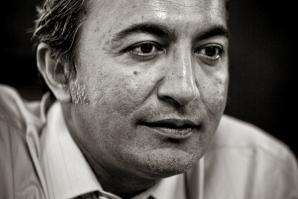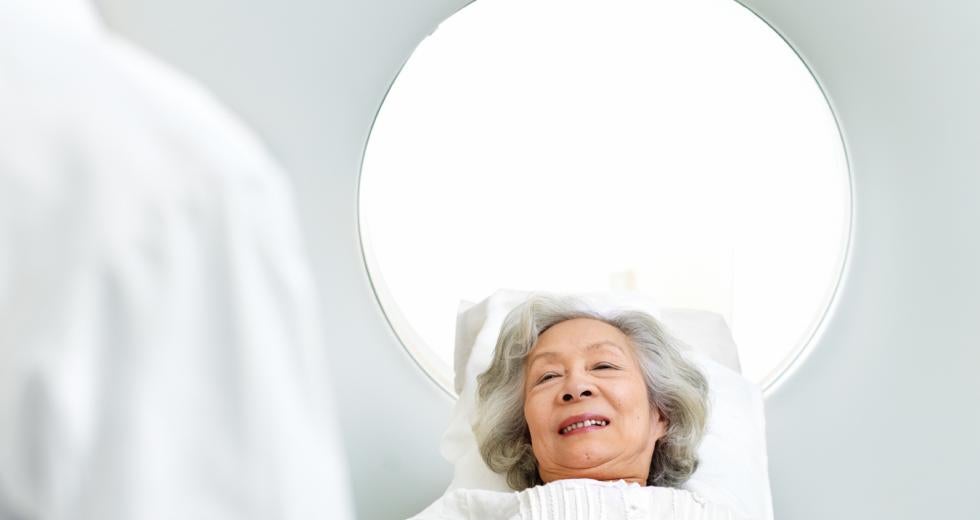As Obamacare begins to take effect in hospitals across the country, it’s becoming clear that the new financial model for Medicare is the polar opposite of a government takeover. Doctors and hospitals have new financial incentives to reduce unnecessary tests and services ordered for patients. These caregivers will compete with one another to improve care while reducing costs. Those who succeed in this new system will be rewarded with bonuses. Those who fail will be phased out.
Medicare, meet capitalism.
One major impact on patients is that future generations of Medicare beneficiaries will no longer have access to the array of costly medical services afforded to today’s seniors.
This is due to three major developments. For starters, the cost of Medicare is expanding like a blimp, and the historical service model is unsustainable. The solution by the Obama administration is to take an axe to Medicare reimbursement rates while making structural changes to increase competition. Finally, scientific breakthroughs are helping doctors more rapidly pinpoint individual ailments so fewer tests are needed.
These three concepts each interact like members of a dysfunctional family. They are all related, and in some ways they benefit each other but when they collide in a bad way, people can die.
SWELLING MEDICARE COSTS
Something had to happen to reduce the cost of Medicare. The social insurance program has become a lifeboat for the sick and elderly that is sinking the federal budget. The program took up 16 percent of the budget last year, but total Medicare spending is expected to nearly double over the next decade, up to $1.1 trillion in 2023. This is because growing numbers of baby boomers are becoming eligible for the program.
But the responsibility falls on hospitals to reduce costs while improving quality care, say some industry experts. The nation’s health care system was not created to force health care providers — the hospitals and physicians — to focus on controlling spending, nor is there much independent scrutiny of the decisions made by physicians. “We spend whatever we want providing health care for people and charge people whatever it is,” says Micah Weinberg, a senior policy advisor with the Bay Area Council, a business advocacy group.
“You always have to be a little skeptical when hospitals say they are receiving 80 percent of what they need to provide health care,” Weinberg adds. “Do they need to use robots to improve conventional surgeries? Are there not ways in which they can reduce administrative overhead?”
In response, hospital administrators argue that new technology is expensive, but it improves health care while lowering long-term costs. As for cutting overhead, that’s bound to happen regardless of how the industry feels about it. The 2010 health law, now known as Obamacare by fans and foes alike, takes a $17 billion bite out of Medicare reimbursements in California through 2020. The reduction will help pay for coverage for the newly insured, according to the California Hospital Association.
To manage the cuts, hospitals must consider which departments and services they will be able to keep, like pediatrics and cancer treatment. Those determined to be inefficient will close.
“Those are the kinds of conversations that are happening in hospital board rooms across the state because the reality is that there will be less money going forward,” says Jan Emerson-Shea, a spokeswoman for the hospital association.
SHIFT TO VALUE-BASED CARE
Medicare has begun testing new approaches that will give hospitals and physicians new financial incentives to reduce unnecessary tests and treatments. At the end of the year, a defined group of health care providers will share savings with Medicare if they can provide high-quality care for less than the expected cost.
This arrangement is called an Accountable Care Organization, which is essentially the group of hospitals or physicians that agree to share the savings they create in the system.
The ACO model has been criticized for opening the door to denying care in order to maximize profit. A similar health care model, the Health Maintenance Organization, lost favor in the 1990s because it severely limited patients’ choices for treatments and providers.
But this time around, the ACO model allows patients a choice of providers just as they have in traditional Medicare and includes safeguards to avoid restrictions on necessary care. In order to get the savings, the doctors and physician groups must also demonstrate they have provided quality health care through 30 indicators. These benchmarks include receiving high marks on patient questionnaires and other performance measures such as the daily number of aspirin given to patients recovering from a heart attack.
Obamacare also reduces Medicare reimbursements by 1 percent for hospitals with high rates of patient readmission and other avoidable complications like hospital-acquired infections. These safety provisions have lead physicians to argue that Medicare will improve under Obamacare.
“I don’t think the standard of care will change until we become more advanced clinically,” says Elizabeth McNeil, a spokeswoman for the California Medical Association, which represents physicians. She adds, however, that inherent in health care is the “risk that patients aren’t always going to get the care they need.”
There is evidence that the creation of Accountable Care Organizations have already begun to curb health care costs. An estimated 430 ACOs now cover 4 million Medicare enrollees across the nation. In the three years since the signing of the Affordable Care Act, nationwide health care spending has grown at its slowest rate since the government began recording data over 50 years ago. Some of those savings have been credited to this new model of health care; the bulk of it, however, is attributed to the weak economy.
RESEARCH HELPS CUT COSTS
As for scientific breakthroughs, medical experts report that the tools and robots used for pinpointing illnesses like cancer are improving exponentially and changing the way that physicians deliver care. For example, new research from UC Davis suggests it is better to avoid CT Scans for young people with certain kinds of head trauma because the chance of acquiring cancer later in life from the radiation outweighs the possibility of finding a previously unidentified head injury. Thus, UC Davis is moving away from costly CT Scans for children, thus saving money for the entire hospital.
“I wouldn’t say it’s just being more careful; I would say it’s
being more
evidence-based,” says Ann Madden Rice, CEO of the UC Davis
Medical Center.
HOSPITALS RETHINKING HEALTH CARE
The UC Davis Medical Center is the smallest health care provider in the Capital Region, serving 13 percent of the market. Following the implementation of Obamacare, it expects to see Medicare reimbursements drop by a quarter billion dollars over 10 years.
Hospital administrators are looking into several ways to offset the cuts. In order to reduce routine hospital visits, the hospital is building a system that would allow for more electronic correspondence between the patient and physician. Instead of driving to the hospital for a checkup, patients would monitor their own weight and blood pressure and send the findings to their doctor before talking to them over the phone.
The hospital is also identifying ways to provide more education to patients and their families about the outcomes of certain tests and treatments.
“If you knew that only 4 percent of people that have that very painful surgery had a difference in their lifestyle or their quality of life, you might choose differently. You might not, but we at least think if people have that information, they can be as informed as possible,” Rice says.
Along with hospitals across the country, UC Davis Medical Center is raising the level of electronic record sharing, both from within the hospital and between other hospitals, in an attempt to reduce the chance of duplicative tests and treatments.
The Obamacare approach to improving efficiency while cutting costs has one major problem, Rice says. Scientific research has not developed to the point where doctors can simply and safely reduce the number of tests they order for a given ailment.
Put another way, the speed of scientific advancements is not in pace with the rate at which Obamacare is reducing Medicare reimbursements. The law provides some grants to benefit scientific research, but concerns remain.
“The industry is being forced to develop the methodologies for [reducing readmissions and hospital-acquired infections] at the same time it is taking lower payments. It’s squeezing things together. I would really hate to see a situation where a patient who really needed to get readmitted for whatever reason didn’t get readmitted because of the penalties,” Rice says.
That said, Medicare beneficiaries should not worry, at least those who belong to UC Davis, says Rice. “Our physicians are going to err on the side of being safe with your treatment rather than saying, ‘Well the federal government wants me to spend less on this person.’ They want you to be safe,” she says.
Other major Medicare providers in the Capital Region declined comment for this story.
Despite the many looming questions about the law, the core message transmitted by credible organizations such as the AARP is that Medicare patients will be able to keep their current doctor, and perhaps the biggest noticeable shift will be the falling cost of prescription drugs (see sidebar). Meanwhile, with the entire industry now on a crash diet, experts are emphasizing that there has never been a greater responsibility on patients and their families to educate themselves on the tests and treatments ordered by their doctor and participate in the discussion. It may not change the outcome, but it reduces the potential for regret.
The Perks of Obamacare
Medicare is here to stay, and you’re not going to lose your doctor. Here are more provisions in the health law expected to benefit seniors:
Annual wellness visit: In 2011, Medicare began covering an annual wellness visit that has no deductibles, coinsurance or copayments. This visit allows patients to craft a health and disease-prevention strategy with their doctor for the next five to 10 years. The visit may include reviews and adjustments of medications, a health risk assessment, a routine physical and a screening for any cognitive impairment.
Closing the donut hole: The Medicare Part D donut hole is the gap between basic and catastrophic drug coverage when seniors are forced to pay out of pocket for the full cost of prescriptions. Following the health law, people who fall into the donut hole now receive discounts on their name brand and generic medications. Those discounts increase over time, and by 2020, the donut hole is expected to be phased out completely. Patients will pay the standard 25 percent copayment for both brand-name and prescription drugs.
Prevention benefits: The law has already provided a long list of prevention benefits for no additional out-of-pocket costs. These include prostate cancer screenings, mammograms, glaucoma tests and nutrition therapy services for those with diabetes, kidney disease or kidney transplant. Prevention benefits are not limited to Medicare beneficiaries.
Fighting Fraud: For every $1 spent fighting Medicare fraud, the system returns $8. Largely due to Obamacare, the government has recovered about $15 billion in Medicare fraud money in the past four years. The law forced all providers to go through a reapplication process. Providers who had felony convictions, incorrect addresses or lacked appropriate licenses were restricted from billing Medicare.
SOURCE: AARP
Recommended For You

Convenient Care
How concierge medicine is changing the health care marketplace
Think of your best friend, a friend that knows all your ticks, hobbies and vices. Now imagine this friend happens to be a doctor, and she’s your doctor.

Paging Dr. Bera
Seeking remedies in the halls of Congress
U.S. Rep. Ami Bera has spent most of his career as one of the Capital Region’s leading voices on health care, first as a doctor and later as Sacramento County’s chief medical officer and a dean of admissions for the UC Davis medical school.



